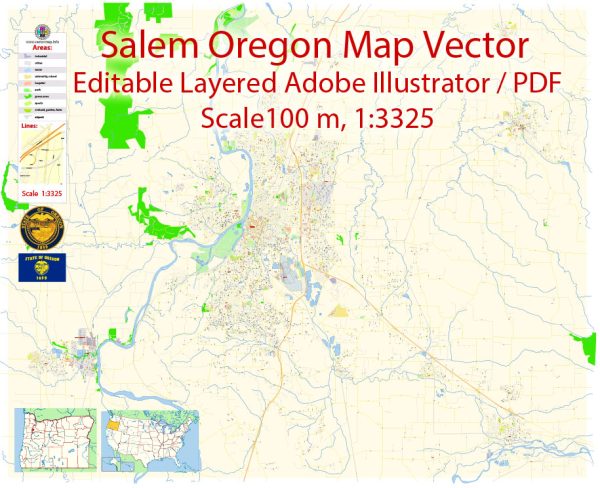Salem, the capital city of Oregon, is known for its diverse architectural landscape, reflecting the city’s rich history and its position as a center of government, education, and culture in the state. Here’s an overview of Salem’s architecture:
- Historic Districts:
- Salem boasts several historic districts, including the Downtown District and the Court-Chemeketa Historic District. These areas are home to well-preserved historic buildings that showcase various architectural styles popular during different periods.
- Greek Revival and Neoclassical:
- Some of Salem’s older buildings, particularly those dating back to the mid-19th century, exhibit Greek Revival and Neoclassical architecture. You can see features like stately columns, symmetrical facades, and elegant detailing on structures in these styles.
- Victorian Architecture:
- Salem also has examples of Victorian architecture, with ornate, colorful homes featuring intricate gingerbread detailing. Victorian homes can be found in neighborhoods like Grant, Irvington, and Englewood.
- Colonial Revival:
- The Colonial Revival style was popular in Salem during the early 20th century. Buildings in this style often feature brick or wood siding, gabled roofs, and symmetrical facades, harking back to colonial American architecture.
- Craftsman Bungalows:
- Salem, like many American cities, has its share of Craftsman-style bungalows. These homes are characterized by their low-pitched roofs, exposed rafters, and prominent porches, reflecting the Arts and Crafts movement.
- Mid-Century Modern:
- In the mid-20th century, Salem, like other American cities, saw the emergence of mid-century modern architecture. This style emphasizes simplicity, open spaces, and an integration with the natural surroundings. Some government buildings and homes from this period may exhibit these design elements.
- Public Buildings:
- As the state capital, Salem is home to several important government buildings, including the Oregon State Capitol. The current Oregon State Capitol, completed in the 1930s, is an impressive example of Neoclassical architecture, with its distinctive white marble exterior, grand dome, and surrounding landscaped grounds.
- Churches and Places of Worship:
- Salem has a variety of churches and places of worship that showcase diverse architectural styles, including Gothic, Romanesque, and more contemporary designs.
- Museums and Cultural Institutions:
- The city is home to cultural institutions and museums, some of which are housed in architecturally significant buildings. For example, the Hallie Ford Museum of Art is known for its contemporary design.
- Parks and Public Spaces:
- Salem features well-designed public spaces and parks, often with architectural elements such as pavilions, bridges, and sculptures that enhance the overall aesthetic appeal.
Salem’s architecture reflects its history and cultural diversity, with a mix of styles that have evolved over the years. Whether exploring historic districts, government buildings, or residential neighborhoods, visitors to Salem can appreciate the city’s architectural heritage and its role as the political and cultural heart of Oregon.


 Author: Kirill Shrayber, Ph.D.
Author: Kirill Shrayber, Ph.D.